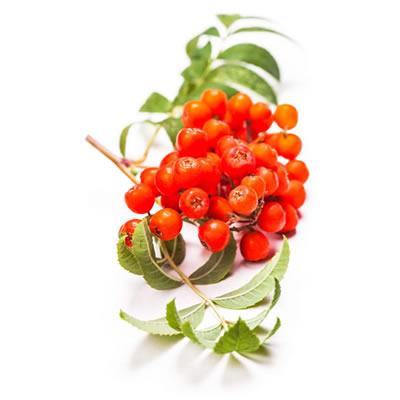Sorbic Acid
What is Sorbic Acid?
Sorbic acid is the most common food preservative against molds, bacteria, fungi, and yeasts. It is favored for its organoleptic neutrality, safety, and efficacy in low moisture foods such as cheeses, and bakery.1
Sorbic acid is a carboxylic acid that is slightly soluble in water and is available as a powder, granules, or microcapsules. It can be applied to foods using various methods:
- Dipping and spraying finished products with solutions.
- Dusting with powdered sorbic acid
- Mixing into formula dry ingredients
- Treatment of packaging material
Origin
Natural sorbic acid was first isolated in 1859 from unripe berries of the rowan tree (Sorbus aucuparia) in the form of the lactone parasorbic acid which was converted to sorbic acid.
In 1900, this acid was first synthesized from the condensation of crotonaldehyde and malonic acid. Its antimicrobial activity was recognized in the late 1930s. Its proven efficacy in treating meats against the bacteria Clostridium botulinum in meats encourage its large scale production in the 1950’s.2
Commercial Production
Several routes are known for the commercial production mainly the reaction of crotonaldehyde and ketene. 3
Alternate methods include the condensation of malonic acid and trans-butenal or derivation from isomeric hexadienoic acids produced by catalytic reactions of allyl chloride, acetylene and carbon monoxide. Powdered acid can be granulated via extrusion or pelletization to enhance its solubility.
Function
Microbial inhibition by sorbic acid is variable and depends on species, strains, composition of food, pH, aw, processing, temperature, and concentration of sorbate. In baking, it is used in sliced and packaged bread, bagels and pita as well as in par-baked, baked goods and frozen doughs.
Optimal antimicrobial activity is at pH below 6.5 (maximum activity at pH 4.76), an advantage compared to benzoic and propionic acids which lose their activities at pH 4.5 – 5.5.
Practical considerations when using this acid in baking:
- It has a water solubility of around 0.16g/100 ml which increases with temperature but is reduced in the presence of sugars.4
- This acid inhibits yeasts strains differently, as some strains are more tolerant to its effects than others.
- Sodium sorbate, calcium sorbate, and potassium sorbates are more soluble in water than sorbic acid. So, they are more commonly used in foods. However, they may raise the pH slightly, therefore some medium adjustments may be necessary.
Regulations
It is considered GRAS by the FDA and can be used as a chemical preservative in accordance with good manufacturing practice for human consumption. 7
In the EU, this acid (E200) is listed in Commission Regulation (EU) No 231/2012 as an authorized food additive and categorized in “Additives other than colors and sweeteners.” 5
EFSA states that maximum allowed usage level of sorbic acid is 20-6,000 mg/Kg.6 Encapsulated acid was also adopted by the EU in 2011 and by CODEX in 2012.
References
- Lück, E. “Food Applications of Sorbic Acid and Its Salts.” Food Additives and Contaminants 7.5 (1990): 711-15.
- Lück, Erich, and Martin Jager. Antimicrobial Food Additives: Characteristics. Uses. Effects. Berlin: Springer, 1997.
- Ashford’s Dictionary of Industrial Chemicals, Third edition, 2011, page 8482.
- Shihab, F.A., Ezzedeen, F.W. and Stohs,S.J. effect of some syrup constituents on the solubility of sorbic acid. J. Pharm. Sci., 1988, 7, 5, pp 455-457.
- CFR 21. Food Preservatives, Sec 182.3089, sorbic acid. https://www.accessdata.fda.gov/scripts/cdrh/cfdocs/cfcfr/CFRSearch.cfm?fr=182.3089. Accessed June 15, 2021.
- Scientific opinion on the re-evaluation of sorbic acid (E 200), potassium sorbate (E 202) and calcium sorbate (E 203) as food additives. June 2015. https://www.efsa.europa.eu/en/efsajournal/pub/4144.
- CODEX AlIMANTARIUS. General standards for food additives. http://www.fao.org/gsfaonline/docs/CXS_192e.pdf


